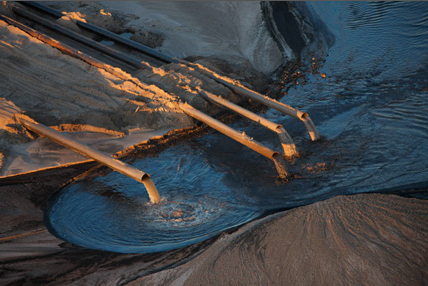Eliot explores the themes of nature and non-nature, focusing specifically within the themes on the motif of pollution. Pollution exists as the link between nature and non-nature. In this case the “river” signifies nature whilst “Oil and tar” signify non-nature. It is only through spoiling nature, that “Oil and tar” become pollution.
 Eliot successfully captures the industrial state of America during the 1920s through the motif of pollution. Due to the huge boom in industry, more and more waste was subsequently created. Eliot effectively forms a commentary on the negative ways in which society therefore spoils nature through the waste and by-products it creates.
Eliot successfully captures the industrial state of America during the 1920s through the motif of pollution. Due to the huge boom in industry, more and more waste was subsequently created. Eliot effectively forms a commentary on the negative ways in which society therefore spoils nature through the waste and by-products it creates.
 The image of pollution spreading throughout water is particularly effective as it suggests how pollution formed by society becomes almost uncontainable after it has been created. As “Oil and tar” continue to spread further down the river, pollution too continues to spread, spoiling nature and leaving it in a state of ruin.
The image of pollution spreading throughout water is particularly effective as it suggests how pollution formed by society becomes almost uncontainable after it has been created. As “Oil and tar” continue to spread further down the river, pollution too continues to spread, spoiling nature and leaving it in a state of ruin.
Additionally through Eliot’s choice of oil and tar as the materials to represent pollution he emphasises the extreme nature and impact that society has upon nature. As the process of removing oil and tar from water is particularly challenging, Eliot suggests the severe significance of the pollution created by society, even perhaps proposing its irreversible nature.
The motif of pollution runs throughout the poem however it could also be said that the poem itself is polluted. The poem being a combination of fragments appears almost jumbled together, each stanza different to another. Pollution in the form of waste or rubbish is jumbled together in a similar way, each fragment within the poem can therefore be interpreted as a different piece of waste that collectively forms pollution.
 Eliot successfully captures the industrial state of America during the 1920s through the motif of pollution. Due to the huge boom in industry, more and more waste was subsequently created. Eliot effectively forms a commentary on the negative ways in which society therefore spoils nature through the waste and by-products it creates.
Eliot successfully captures the industrial state of America during the 1920s through the motif of pollution. Due to the huge boom in industry, more and more waste was subsequently created. Eliot effectively forms a commentary on the negative ways in which society therefore spoils nature through the waste and by-products it creates.
 The image of pollution spreading throughout water is particularly effective as it suggests how pollution formed by society becomes almost uncontainable after it has been created. As “Oil and tar” continue to spread further down the river, pollution too continues to spread, spoiling nature and leaving it in a state of ruin.
The image of pollution spreading throughout water is particularly effective as it suggests how pollution formed by society becomes almost uncontainable after it has been created. As “Oil and tar” continue to spread further down the river, pollution too continues to spread, spoiling nature and leaving it in a state of ruin.
